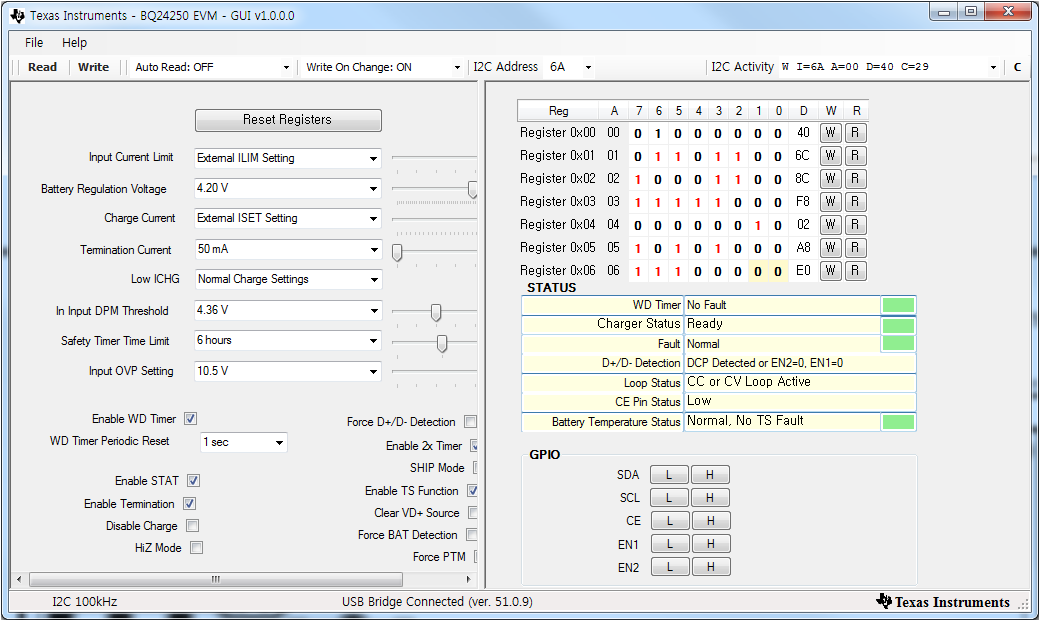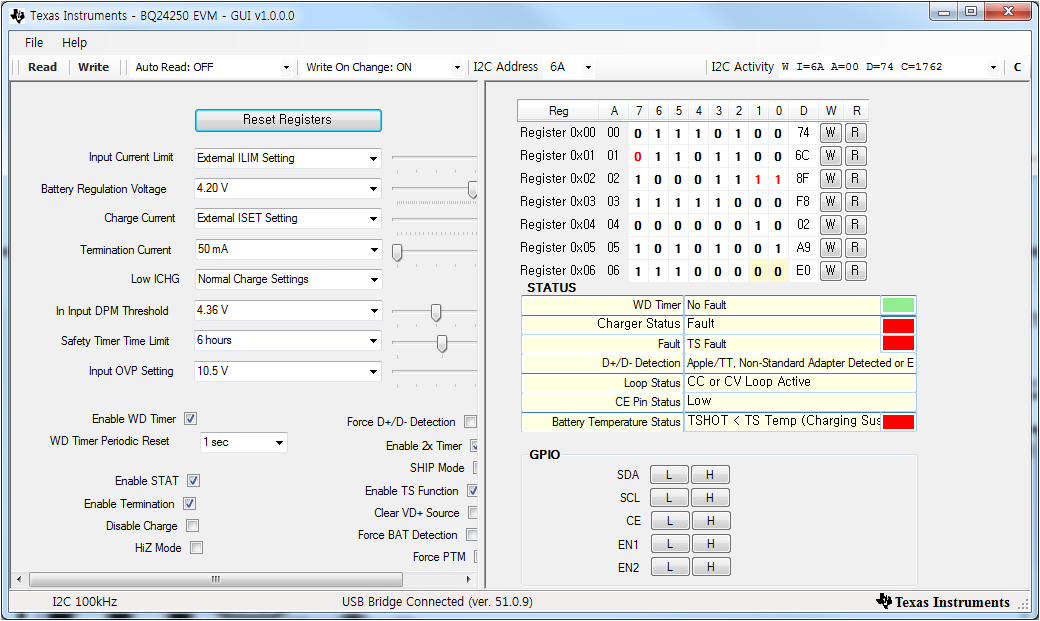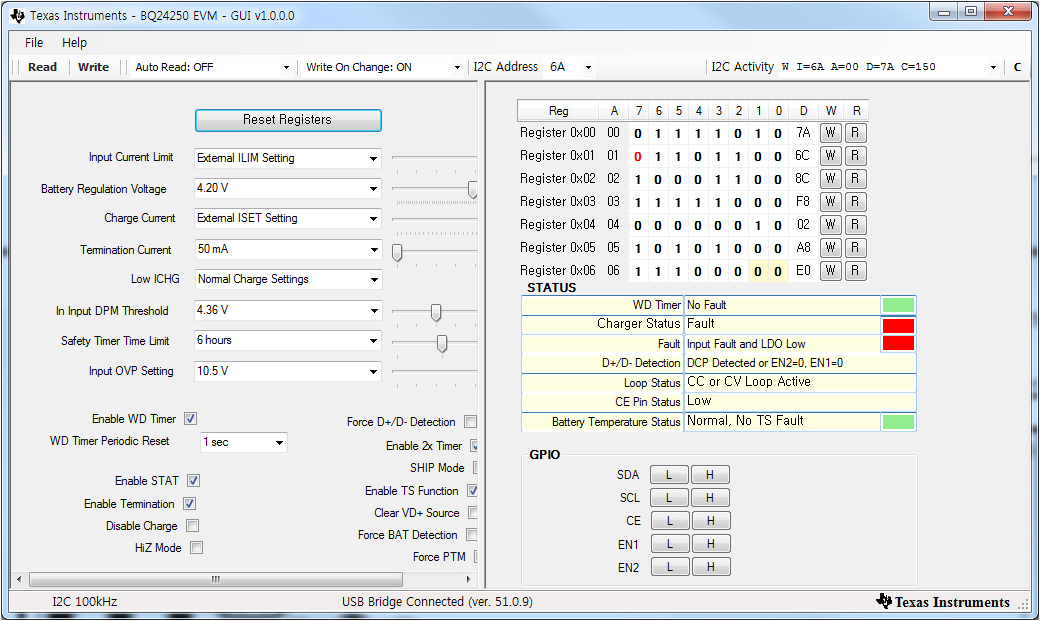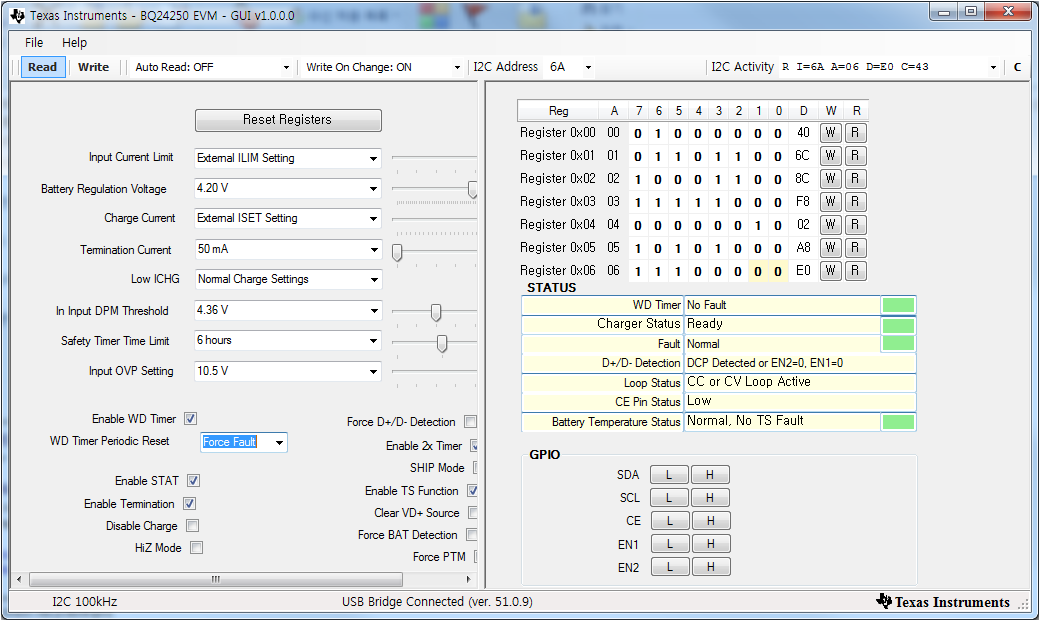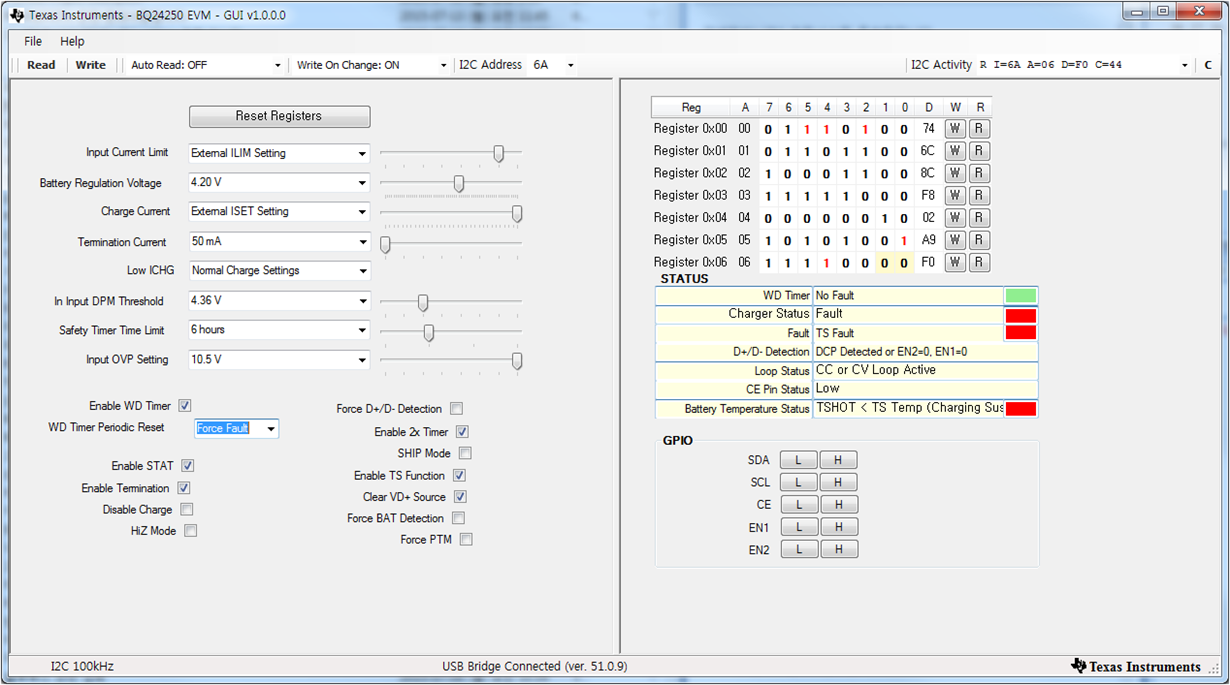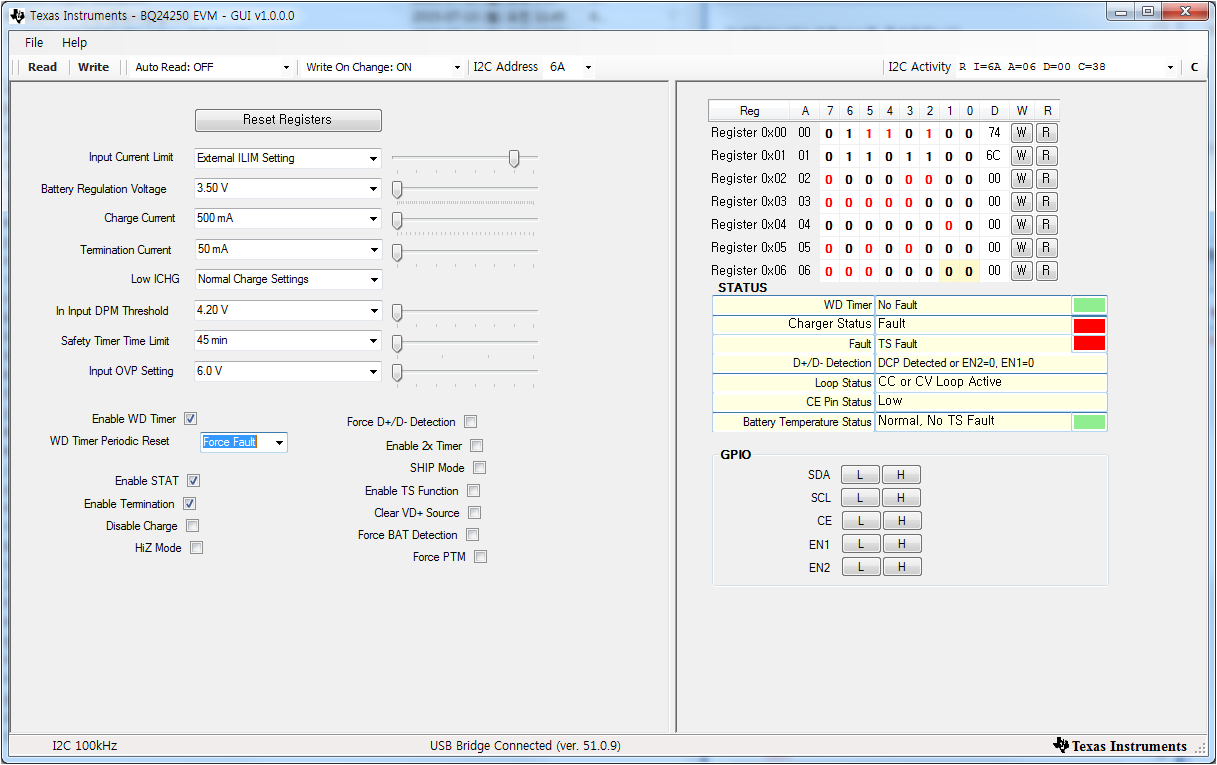Hello~
I need your help for battery charger.
Below is my schematic of BQ24251 and is using the QFN package.
NTC is not using and rest of resistors are 20K & 20K such as bq24251EVM-150.
Test procedures are as below.
1. Insert the battery.
2. Connect the AC adapter.
3. BQ24251 does not start to charge the battery (As I understand, this is stand-alone mode.)
4. In the above condition, /CE input is "low", /PG output is also "low", and LDO pin has 4.9V output. VIN = 5.2V, VSYS = 4.3V, but STAT pin is "high".
5. After system booting, processor send the I2C command. (As I understand, this is host mode.)
6. Reset and turn off the WD timer & TS function by I2C communication.
7. BQ24251 is starting to charge the battery, normally.
8. Removed the battery as well as AC adapter.
9. Insert the battery => System booting => Read the I2C register of BQ24251.
- 00h --> 40h (0100 0000b) <== No fault & Ready & Normal
- 01h --> ECh (1110 1100b) <== B7 value seems to be wrong.
- 02h --> 8Ch (1000 1100b)
- 03h --> F8h (1111 1000b)
- 04h --> 02h (0000 0010b)
- 05h --> A8h (1010 1000b)
- 06h --> E0h (1110 0000b)
10. Insert the battery => System booting => Connect the AC adapter => Read the I2C register of BQ24251.
- 00h --> 74h (0111 0100b) <== TS fault
- 01h --> ECh (1110 1100b) <== B7 value seems to be wrong.
- 02h --> 8Ch (1000 1100b)
- 03h --> F8h (1111 1000b)
- 04h --> 02h (0000 0010b)
- 05h --> A9h (1010 1001b) <== TS temp > Thot
- 06h --> E0h (1110 0000b)
11. Insert the battery => System booting => Disable the WD timer & TS function by I2C command => Connect the AC adapter => Read the I2C register of BQ24251.
- 00h --> 10h (0001 0000b) <== WD disable & Charging & Normal
- 01h --> ECh (1110 1100b) <== B7 value seems to be wrong.
- 02h --> 8Fh (1000 1111b)
- 03h --> F8h (1111 1000b)
- 04h --> 02h (0000 0010b)
- 05h --> A0h (1010 0000b) <== TS disable & Normal, No TS fault
- 06h --> E0h (1110 0000b)
I cannot understand why this behavior is happened.
Would you please be able to think the expected cause?
Thanks... C.W. :)



